Los Angeles, or the End of Assimilation
Victor Artola
Other languages: Français
As we entered the fifth month of the second Trump era, the explosive social movements that marked the close of the 2010s seemed like a distant memory. The fifth anniversary of the burning of the Third Precinct in Minneapolis came and went almost unremarked upon, and in the weeks leading up to it rumors of a Derek Chauvin pardon were swirling across news outlets. Conflict seemed relegated to departmental staffing cuts and budget reshufflings, while the palace intrigue of the Musk affair afforded ersatz enjoyment in the absence of the real thing. However, Los Angeles’s mass anti-ICE mobilization — set off by the opening of a new stage in the state’s deportation strategy — has reignited that old summer feeling. Shorn of “the resistance” for the moment, rebellion is once again in the air.
A state adequate to its time
Grasping the scope of the seismic shift that has occurred in the last week requires a reconceptualization of what perhaps belies the barrage of open scandals, grifts, and reversals that composes any purely empirical observation of the first five months of the second Trump presidency. While the budgetary machinations and mass layoffs of DOGE gave volume to what’s been called the strategy of “flooding the zone,” key maneuvers within the executive hint at a greater project of state transformation.
Our wager is that what is at play is a project of state modernization. Although capital long ago ejected the total reproduction of its supposed other, labor, from its internal dynamic of accumulation, the American state that has persisted is as old as the fallow fixed capital that haunts the rust belt. A whole apparatus, with its origins in the positive intervention of the state into the life of a national working class considered as prime civic object, lumbered on. In this light, DOGE is perhaps merely a form of creative destruction and “retooling,” all the more appropriate for modeling itself after the “move fast and break stuff” managerial orientation of Silicon Valley fintech capital.
If any positive project of the state dependent on the integration of a mass working class into an operable civic body is a thing of the past, what remains? One could of course reply by invoking the old Weberian orthodoxy: the state is what holds a monopoly on violence. And it is true that if we look past the confusions wrought by austerity under the guise of DOGE and trade policy conducted as commercial real estate negotiation, there lies a clarity of purpose in recent events: to reshape the disciplinary side of the executive. While others may have forgotten the lessons of the George Floyd uprising, Trump and his coterie surely have not. The 2020 rebellion stands as the primal scene of humiliation and impotency, one which led to the demise of his reelection efforts. Although the National Guard ultimately restored order in twenty-three states, the Trump hardliners never had their bloodlust quenched, thwarted by career bureaucrats like General Mark Milley and Attorney General William Barr who declined to send in the army.
Seen in this light, the present reconfiguration of the American disciplinary executive apparatus shows itself to be a rather clear effort to avoid another such moment. Appropriate to our contemporary era, a deeply consequential restructuring reveals itself to be the petty project of a scorned racket. Trump has staffed the key positions of this hard shell of the state largely with third rate media personalities that are unlikely to attenuate the anti-democratic nature of the administration's hardcore. Reconfiguration has also flown downward at the Department of Justice, the FBI, and the Department of Defense, with perceived “Bidenist” elements purged and remaining staff subject to reported loyalty tests. As the product of the War on Terror era, the Department of Homeland Security, and with it ICE, has always been a steadfast bulwark of the deeper reactionary project.
Combined with an ambivalence about foreign intervention and a perceived popular mandate to rapidly carry out the revanchist white working class’s anti-immigrant program, it is no surprise that the monopoly on violence has focused inward and revealed itself in all its baseness. If proletarians must no longer necessarily be citizens as well, it follows that, for the mass of immigrants from Latin America that arrived after the restructurings of the 1970s, there will be no eventual integration of the kind that followed the earlier waves of Europe’s underclass. The mass layoff finds its political analog in the mass deportation.
Building the wall
The analysis sketched out below does not discount the contingencies and particularities of history and politics that would be required for any finer grained analysis of the contemporary deportation machinery and its long-term strategy. Our goal here is to demonstrate that what presents itself to many as a policy debate is, in fact, bound up with a larger transformation of the way in which the state composes and mediates its national store of labor power. The reproduction of the proletariat in our era has been subject to profound restructuring that increasingly externalizes it from the dynamic accumulation of capital. This more general tendency is crucial to explaining why the immigration struggle taking shape today has drawn its contours from the BLM sequence, rather than from the earlier political movement towards assimilation and legalization that emerged during the pre-Global Financial Crisis (GFC) debate around “comprehensive immigration reform.”
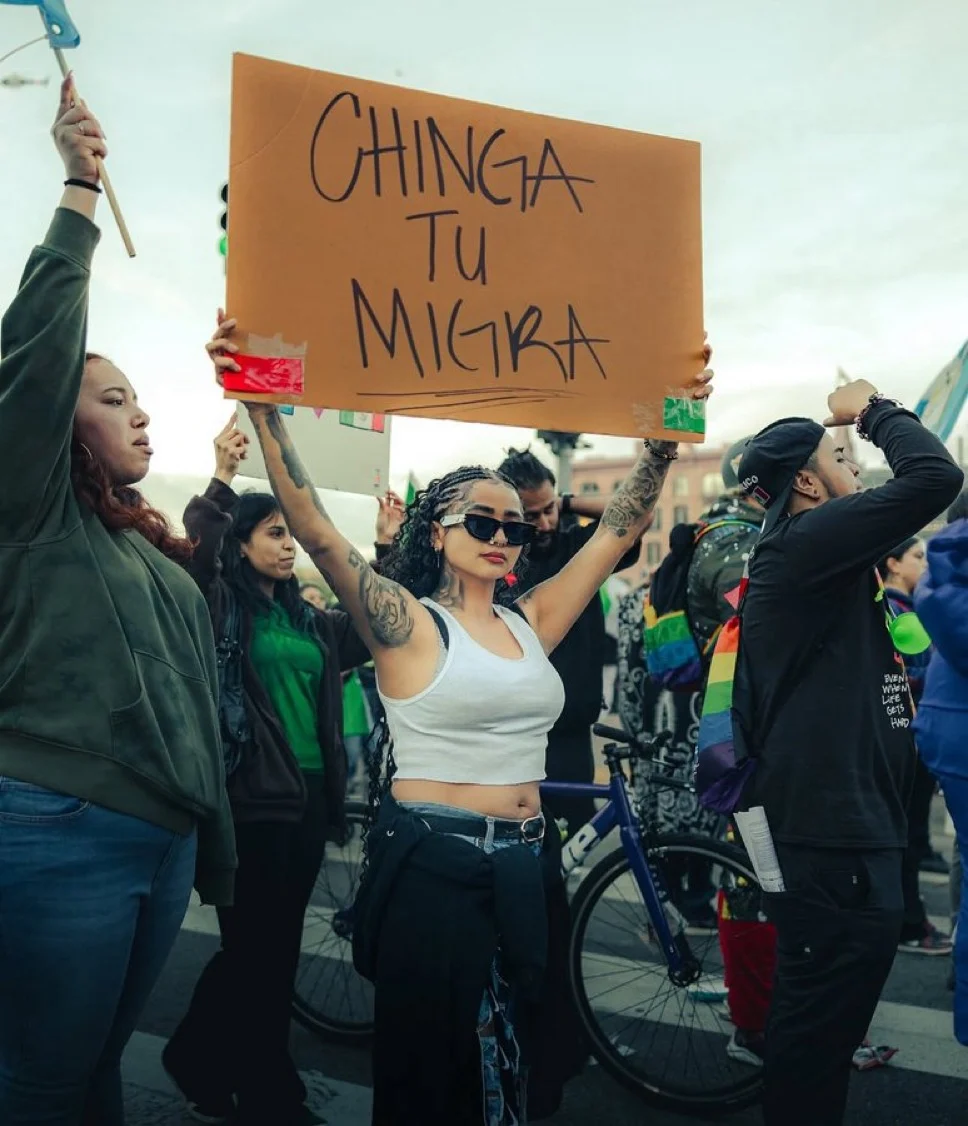
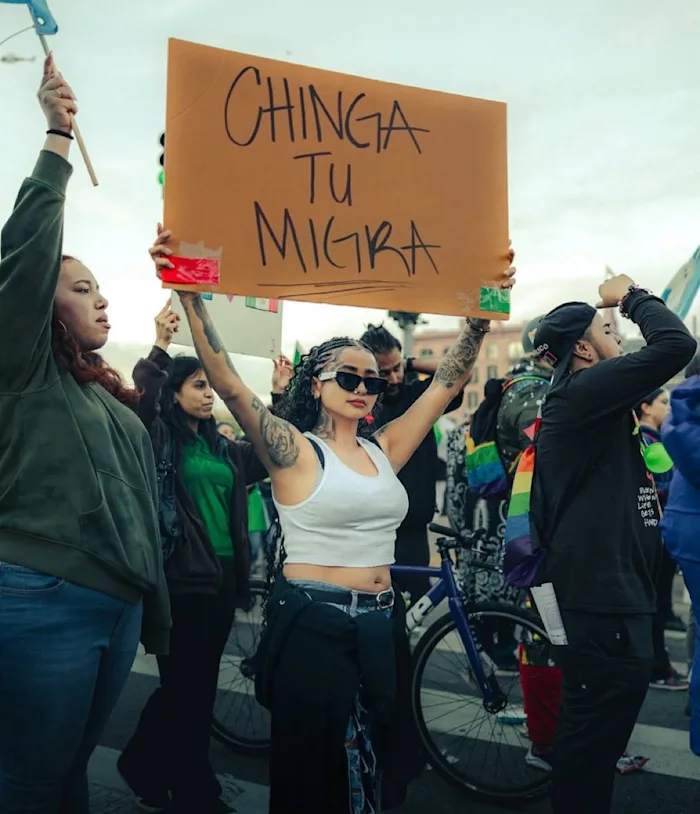
Although highlighting the continuities between the deportation regimes of Obama, Trump, and Biden has become something of a leftist refrain, less attention has been paid to exactly what the specificities of the spatial and legal logic of enforcement reveal. Considered through the categories of internal apprehensions and apprehensions at the border, a deeper logic can be discerned, which has less to do with any political party orientations. In the twilight era of the aforementioned “comprehensive immigration reform” project, which belonged to the financialized housing and construction boom of the early to mid-2000s, the emergence of a sharp downturn in the labor market with the 2007-2008 GFC coincided with the ramping up of an internal deportation machine under the Obama admin, but this time with a new twist.
Mid-century Mexican migration tended to be characterized by seasonality and flexibility of movement across the border. By contrast, buoyed by the flood of funding to DHS in the early years of the War on Terror, the regime instituted by the Obama administration was based on the permanent removal of a transnational working class via formal rather than voluntary proceedings that severely limited migrants’ options to return to the US.
With the cross-border exploitation of labor firmly established by NAFTA and subsequent supply chain reconfigurations, a porous border that could absorb and expel migrant labor with flexibility became less of a necessary condition for American capital. As the labor market recovered in the mid-2010s, interior apprehensions fell (largely driven by a decrease in voluntary returns), while those at the border rose sharply. Capital could keep the labor it needed here, but the long term prospects of accumulation still demanded a fortification of entry into the national container of the working class.
A hard border, physical at the frontier and virtual inside the country, became the central structure around which the deportation machine manifested its “law and order.” Trump’s 2016 slogan of “Build the Wall” was less a rejoinder to Democratic policy and more a co-optation of existing practice. Yet the first Trump administration’s deportation regime only brought modest increases, never even approaching the heights of 2008 through 2011. Although the reasons are complex, and the administration’s lack of bureaucratic expertise played some role here, it can be again be speculated that the already rebounding labor market that began under Obama was a major explanatory variable.
Though the precipitous decline in migration levels during the pandemic meant that Biden early on presided over a massive decline in total apprehensions, the normalization of a deportation regime focused on border actions began again in earnest in 2024. Here again, we see a pattern in which Trump merely explicitly articulates politically the already existing technocratic policing of the border, and brings to completion the perceived historical task of mass deportations implied all along.
In sum, the second Trump term represents a continuation and culmination of a particular horizon. A closer look at the internal and border shifts in recent months reveals that the discipline and militarization of the border is increasingly extending into the interior. With the workplace and neighborhood raids that began in earnest in May — the goal being 3,000 daily apprehensions — the static violence at the border has been spectacularly turned inward. The disciplining of a labor-power regarded as external and expendable by capital at the hands of the state now finds its adequate form in the unleashing of the total apparatus of the state monopoly on violence into the formal and informal zones of work that dot the metropole.
72 Hours in LA
We won’t recount the specifics of the various avenues the second Trump admin pursued towards its goal of mass deportations in the first one hundred days. Suffice it to say that prior to the recent offensive into the sprawling Democrat-run metropole, operations oscillated between spectacle (Dr. Phil’s embedded “reporting” within raids) and gambles probing and provoking legal challenges (the CECOT affair, the ending of birthright citizenship via executive order, etc.). A dynamic echoing that of the first Trump administration was seemingly falling into place — sudden leaps just as suddenly leading to retreats.
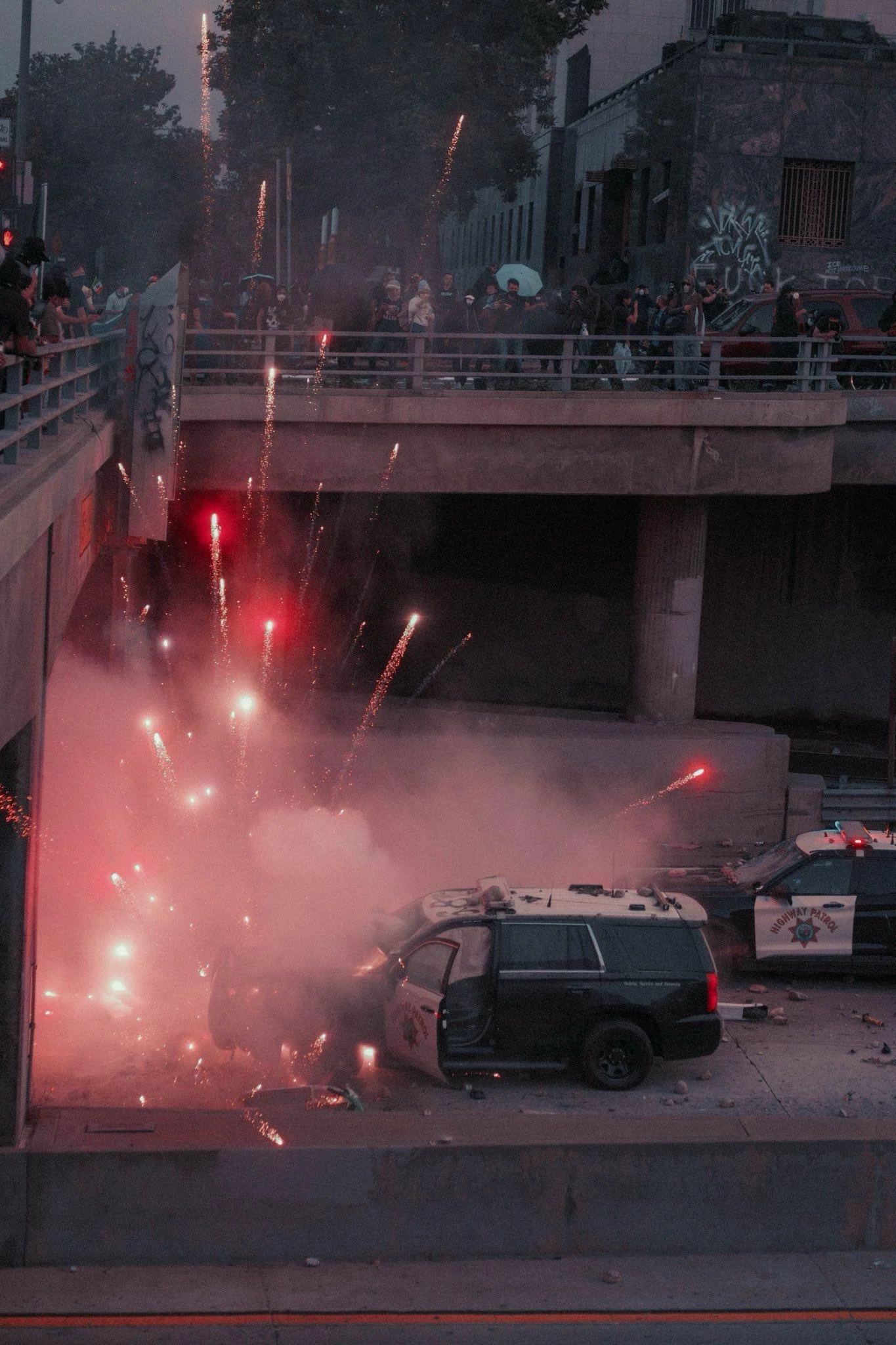
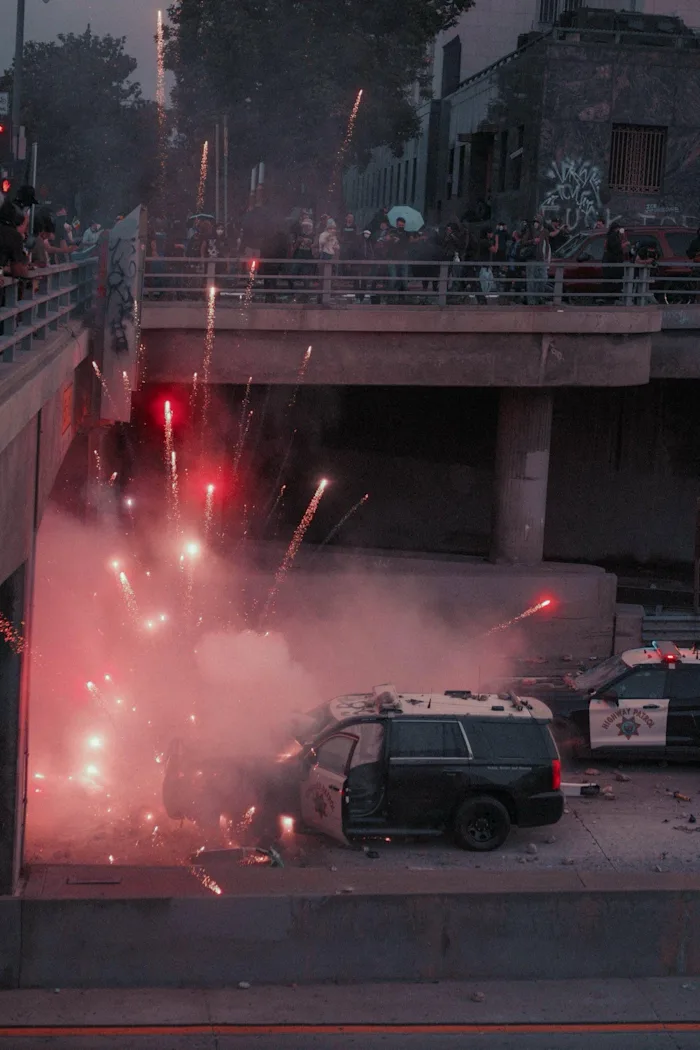
The recent incursion into Los Angeles, in spite of all appearances, has bucked the trend. Rather than retreat, the deportation machine has dug in, embedding itself into the fabric of daily life. Raids and snatchings occur at random, in accordance with the informality and dislocation of immigrant labor within the wider Los Angeles economic zone. Beginning with a joint task force of DHS, FBI, DEA, and ATF, on June 5th the invading force quickly added a formal military wing with the federalization of 700 California National Guard troops. Days later, as resistance mounted, this number skyrocketed to 4,000 national guard troops with 700 Marines waiting in the wings, taking a crash course in riot control in soccer fields just outside of the downtown core.
As with all of the Trump administration’s strategic shifts, an early clarity quickly succumbed to overdetermination, tactical precision giving way to opportunistic chaos. To begin to refine some precise vision of our current political moment and where it may be heading, it is worth looking closely at the initial sites of struggle in the first 72 hours of the Los Angeles incursion.
ICE’s attacks on LA began quietly, with immigration enforcement detaining migrants showing up for routine immigration hearings in the week before open escalation. A portent, however, of the street raids to come could be seen in the contentious eruptions that were marking the passage from May to June (in Chicago, San Diego, and Minneapolis).
The federal invasion of Los Angeles began in earnest early on Friday June 5th. ICE and other federal agencies unleashed a series of large, heavily armed surprise raids at targeted locations throughout the city. Around 9am, they descended on a Home Depot in Westlake/MacArthur Park, one of the most densely populated working class immigrant enclaves in Central LA. As community members caught wind of it through rapid response networks, they scrambled to get to the scene in an attempt to stop them, arriving too late — a spatial limit to the sprawling zone of struggle that became clear early.
As word spread of these raids, so did the response. By around 11am, ICE had arrived with warrants at two different locations of Ambiance Apparel, a clothing manufacturer in the city’s Fashion District — an industry almost totally dependent on immigrant Latino labor. Not long after, hundreds of protesters arrived on the scene as well, surrounding the entrances to both locations. One was a storefront location in the middle of the bustling fashion district, the other a warehouse a mile away in the industrial and logistical alley along the LA River.
These confrontations mark the reemergence of the conflictual spatial dynamic of the most interesting moments of the George Floyd Uprising (and the earlier Ferguson rebellion). Instead of the mostly empty downtown cores and its symbols of local political power, the raids opened a zone of conflict in the peripheral industrial and logistical archipelago that makes up the actual material reality of Los Angeles.
As immigration officers detained employees inside the Fashion District site, militant crowds faced off with the federal task force. At the peripheral warehouse location, ICE loaded up vehicles with captured workers while protesters ultimately surmounted a haphazard response that resulted in the arrest of SEIU President David Huerta.
These crowds were an assemblage of experienced activists, neighboring workers and passerbys, family members of detained workers, representatives of the local liberal political machine, and unruly working-class Latino youth. This heterogeneous composition perhaps accounts for some of the initial response’s shortcomings — protestors who understood the need for some coordinated effort wavered between acting as witnesses and guarantors of legal rights, and being serious in their attempts to block detention efforts. The coordination of the latter, when it did come, was confused and delayed.
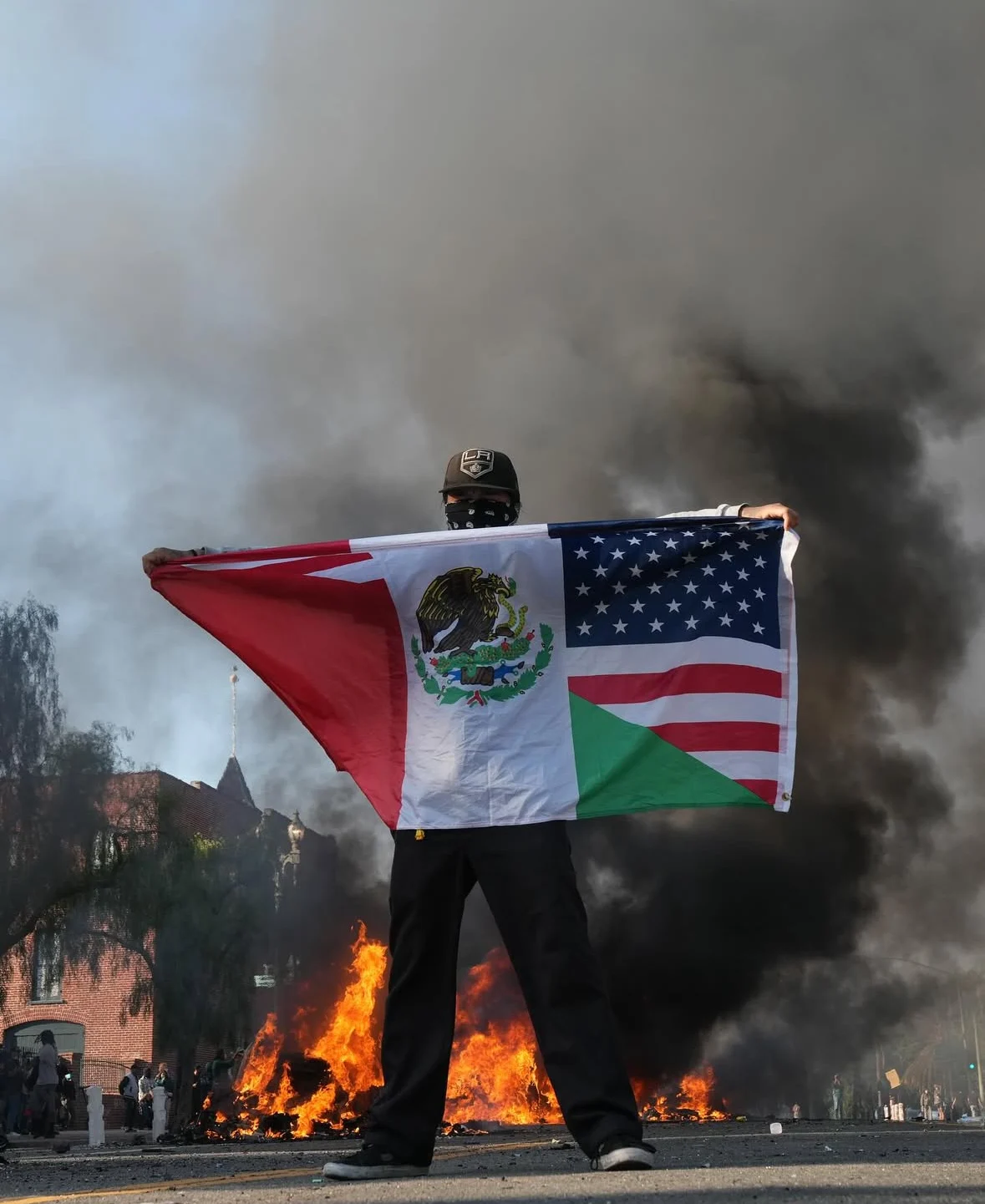
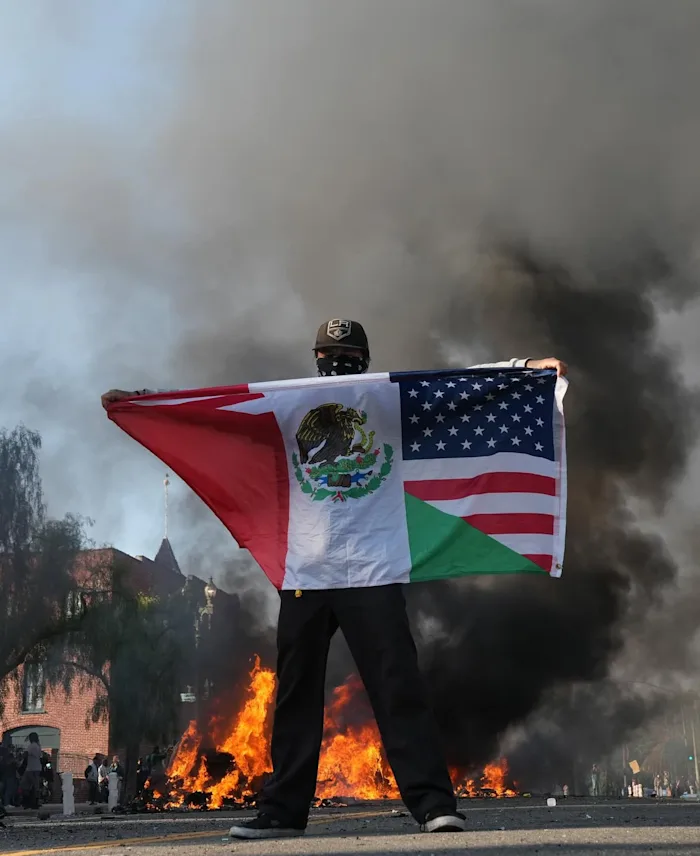
At the Ambiance warehouse, DHS was able to leave mostly without resistance through an undefended side exit. While activists insisted on morally checking the local police who set up as static mediators between the crowd and the warehouse, no real strategic sense of actual possibilities for defense was established. Given that these raids happened and will continue to happen in spaces unfamiliar to responders, quickly acquiring and sharing a spatial awareness will be critical moving forward.
Given its location in the dense grid of the fashion district, the storefront raid invited more intense conflict between militants and federal officers, which dragged on for hours. Only extreme force and crowd control measures by a combination of DHS and FBI officers cleared the way for vehicles to make their escape.
Although the tactical exigencies of these raids prioritize a familiar confrontation with the disciplinary state, they also pose a question that can only lead toward the first cracks of the so-called “glass floor” of production. What is the nature of these spaces of labor and accumulation of material wealth in the form of commodities that the “external” community is drawn to? What would it require to defend the workplace and workers against attacks by the state? What potential is there for struggle at the gates to reflect back upon the site of labor, now that its very composition has become a site of public contention? These key questions, which form the crux of any future movement toward communist measures, are already at play in every defense against a workplace raid.
The next phase of the struggle followed the deportation machine. A few hours later, protesters gathered in their largest numbers yet for a rally called by SEIU outside the Federal Detention Center (a few miles north of the raid sites), where the captured workers were being processed. The crowd of some 500 people varied widely in their political aims and tactics. There were members of community groups, professional unions, and nonprofits. Some advocated for a peaceful “sit-down” style protest, warning the crowds about the danger of getting arrested on federal property. Other more radical actors focused on directly blocking the detention center entrances with their bodies, before later erecting barricades made up of dumpsters, car parts, office chairs, scooters, traffic cones, and whatever else people could scrounge up in the vicinity.
LA’s status as a “sanctuary city” created tactical and political confusion on the side of the state, allowing the confrontation to extend for hours. LAPD remained mostly at a distance, while from within the garage entrance DHS police began to retaliate, deploying flash bombs, less-lethal bullets, tear gas, and pepper spray. This triggered some of the more passive protestors to clear out, but more than a hundred others stood strong, destroying the guard box in front of the parking garage and shattering cement bollards so they could hurl chunks at the police. These protesters held the line for several more hours, until the larger gathering of LAPD finally dispersed the crowd up the boulevard. But, the night wasn’t over yet.
Around 9pm, reports began to circulate of a massive federal task force staging area at a private parking lot in nearby Chinatown, where hordes of HSI, ICE, and FBI officers were gathered along with dozens of government vehicles. Protesters made their way to this location, and another tense standoff began. As officers attempted to drive vehicles back into the lot, the crowd attempted to physically block them with their bodies, prompting the FBI contingent to activate two massive armored vehicles equipped with sound cannons and flood lights. Blockaded by the tanks and rows of heavily armed border patrol agents, the government vehicles were cleared from the lot, and ultimately fled the scene. Another geographic marker of struggle, the invading force at rest, entered the realm of imaginable intervention (which would continue in the days to come with protests at hotels hosting DHS agents).
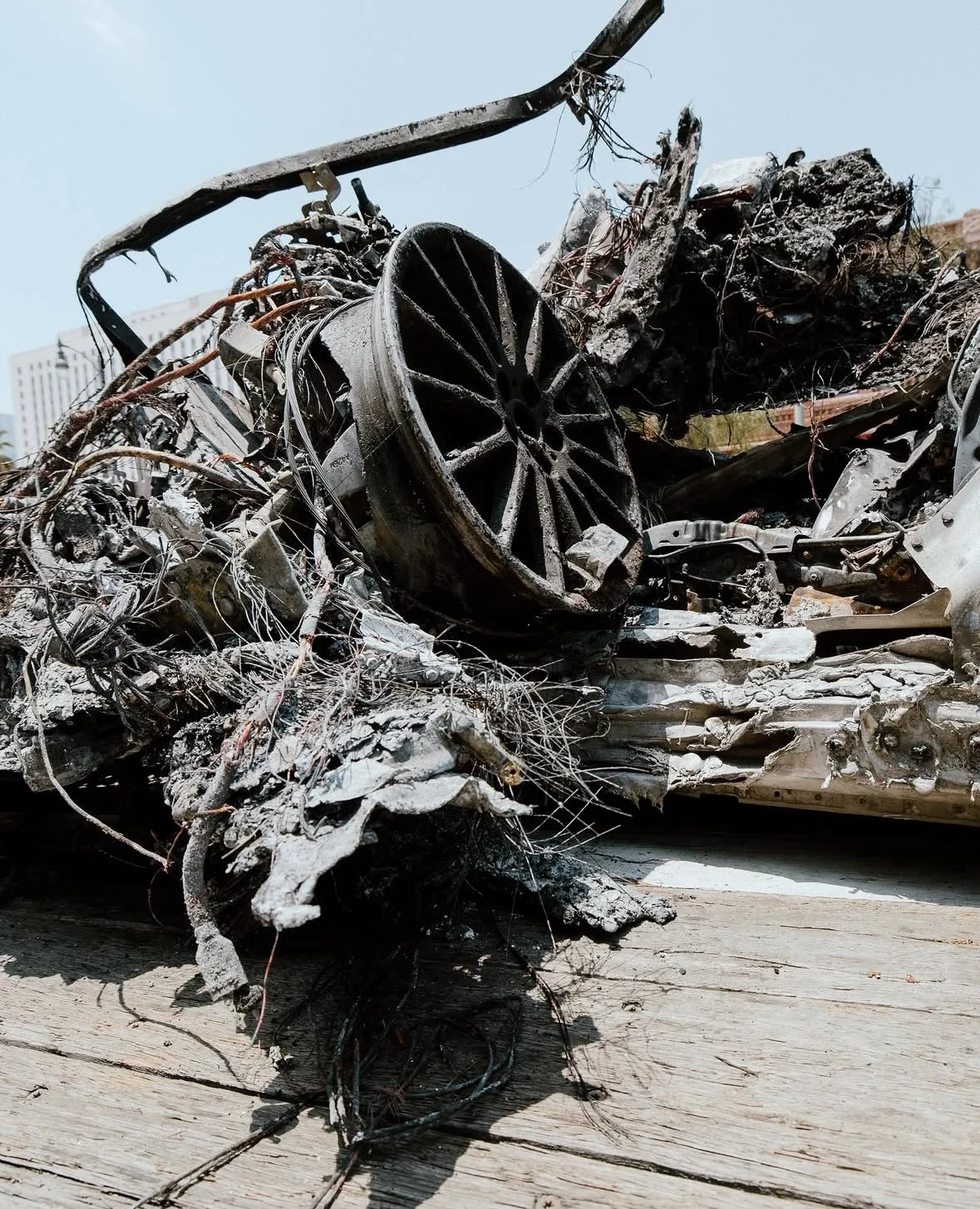

On Saturday morning, ICE’s assault on LA continued, as they staged in a Home Depot parking lot for an apparent raid in the city of Paramount, a working-class, mostly Latino community in the county’s industrial exurbs. It was here that Saturday’s most impressive and sweeping conflict yet emerged, lasting into early Sunday morning and echoing some of the most dynamic moments of the Ferguson and later George Floyd uprisings. The car-centric architecture that comprises so much of LA — and really America — is often seen as a negative limit to insurrection. Yet the struggle in Southeast LA should have us consider it perhaps as merely giving it a particular form, creating a terrain nearly impossible to control for the feds. The sprawling conflict evoked the classic rhythm of LA traffic, with blockaders deadlocked at some skirmish lines while others freely flowed along the boulevards into nearby Compton.
By Sunday, as it was clear that the militarization of the Federal Detention Center would be here to stay and the affair politically transposed itself into a standoff between state and city officials and the Trump administration, the struggle contracted to the downtown area. A demonstration of thousands in front of City Hall quickly flowed beyond the staging area for speeches by PSL and coalition partners and joined smaller, though still numerous, militant groups around the detention center. National Guard lines at the beleaguered garage entry for the center repelled early small numbers of demonstrators, yet the ultimate forces of order soon became the LAPD.
Likely seeking to dispel the Trump administration’s claims that the insurrection had overwhelmed city and state capacity, local police regiments were given a green light to aggressively route demonstrators. The day exploded into the predictable police riot, with several hundred strong groups taxing cop lines across multiple blocks bisected by the 101 freeway. While the imagined distinction between the “professional anarchists” and the peaceful protestors often has its real expression in the spatial and temporal separation of the mass rally and the minoritarian militant bloc, the mass that acted that day definitively transcended that dichotomy.
If a genuine spatial and tactical awareness was able to crystalize, this is in part because the terrain itself provided clear objectives. Here’s the spot they bring people in and out, here’s a nodal point in the deportation machine without which the next step can’t proceed, and the previous one can’t count on. The widespread dissemination of street awareness and clarity concerning who the enemy is testifies to the collective experience gained by a cohort of young militants in 2020 and the Palestinian solidarity movement. And unlike the George Floyd Uprising, which emerged at the height of social distancing and tended to be marked by an absence of on-the-ground communication, here there were the beginnings of a creative openness and ad hoc coordination. Activists and pro-revolutionaries, though not dissolving themselves as distinct blocs, moved among and in concert with a militant working-class composed of Latino LA youth whose lifeworld was directly under attack.
The task of real sanctuary
As we write this, a week has elapsed since the beginning of the federal incursion into Los Angeles. Raids have continued apace, following no seeming logic other than that of opportunism. Carwashes, Home Depot parking lots, trucking companies, and churches are all made fair game in an attempt to materially destroy whatever “sanctuary city” policy may be on the law books. Though the extent to which the Democratic Party is willing or able to meet the situation remains to be seen, for the Trump admin, anything short of direct and open material support for mass deportation operations is a part of the imagined insurrection. One should not discount the real possibility of a dramatic constitutional break, particularly if the federal government makes good on its promise to bring the war on Sanctuary Cities to other states.
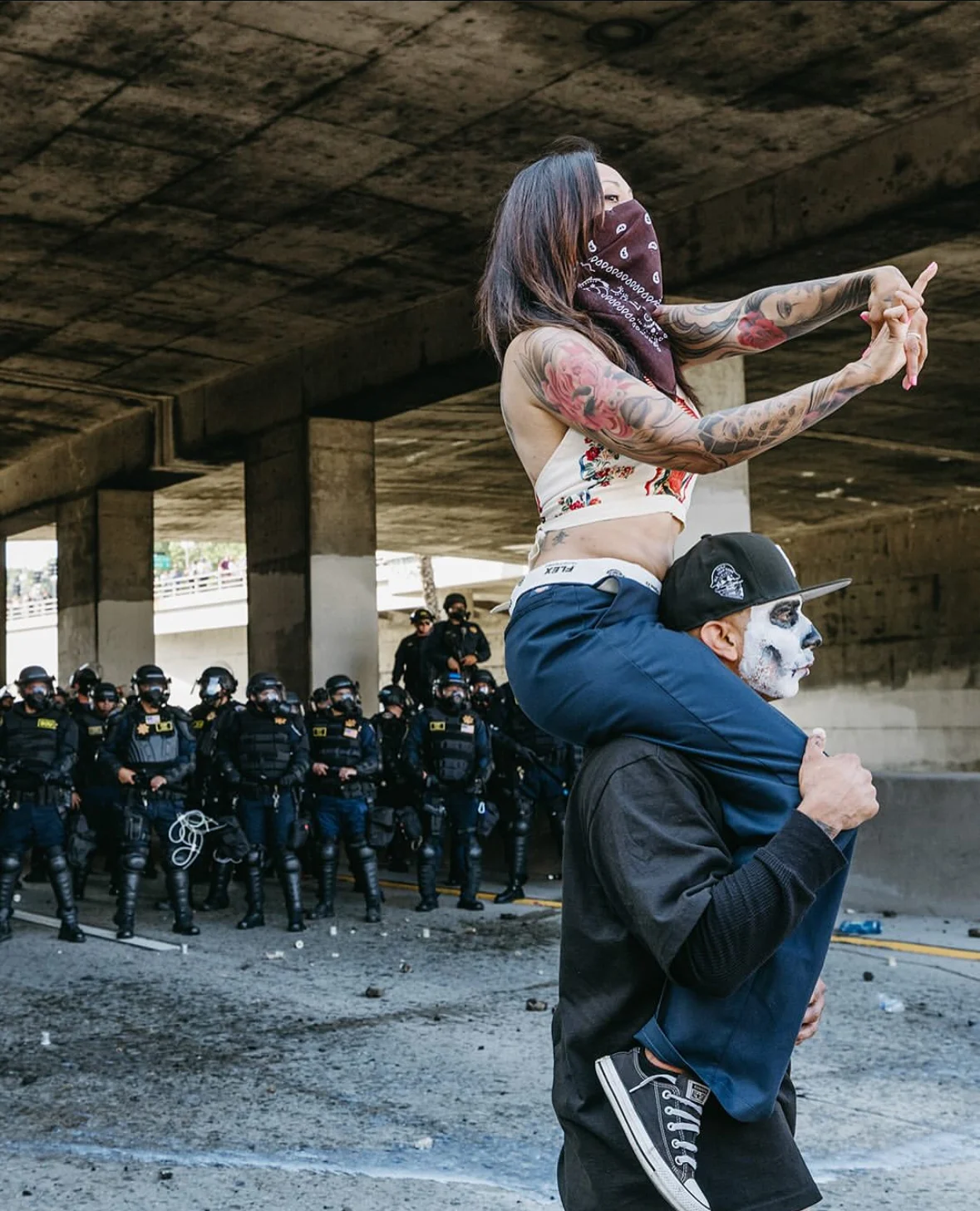
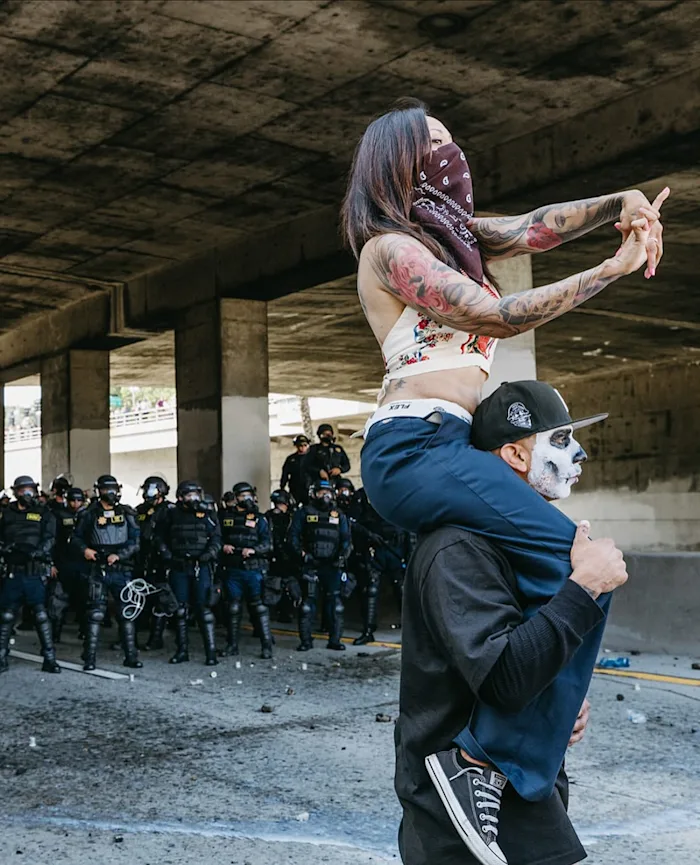
It is not our job to dream up the strategies that might allow the Party of Order to beat back the deluge. Rather, it is to determine what necessary tasks are being assigned by the day, what forces of creativity, determination, and solidarity are being called forward, and what forms of action now appear obvious to all. Already, beyond the rallies and skirmishes downtown, a self-organized practice of nightly demonstrations outside hotels suspected of hosting DHS agents has emerged. At the same time that battles with LAPD broke out Sunday, protestors in Pasadena succeeded in driving ICE agents out of the AC Hotel. In addition to these above ground efforts, militants have organized to clandestinely attack the idle implements of the deportation machine across several parking lots.
The next stage will require the real extension of a daily infrastructure of defense. The bases are obvious: they are wherever immigrant workers congregate in the open, prey at any moment to DHS sweeps. The immediate task is to build zones of real sanctuary across the sprawling metropolis, to go to the workers and clearly present the burgeoning construction of a real peace, to fraternize and begin to dissolve the sociological differences that would compose this struggle as made up of allies on one side and the at-risk on the other.
The existence of such dispersed zones of defense, if followed through to their end in the face of an enemy that has yet to retreat, pose the beginnings of an answer to a question not yet asked. In their daily reproduction, growth, and transformation, they push us to imagine the creation of a real human community — communism — as a task more and more obvious to all involved, reducible to concrete problems and reconfigurations of the terrain and daily life.
June 2025
Cover image: Gabriela Bhaskar